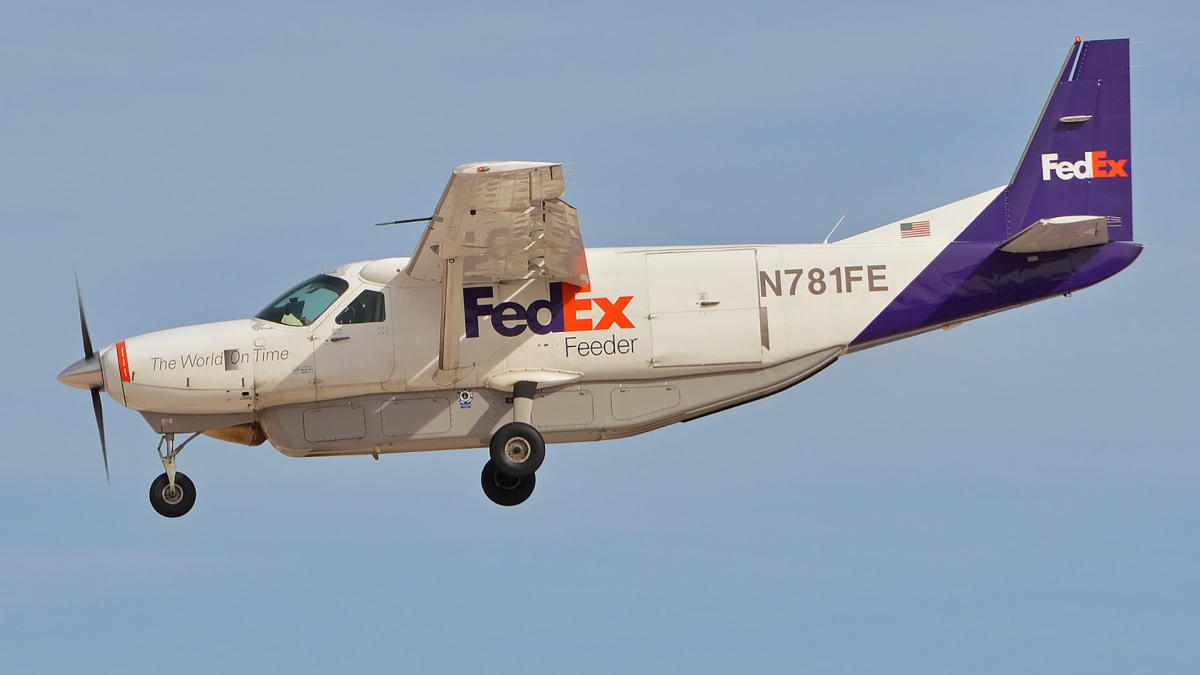Following a successful FedEx Cessna 208 Caravan test flight with no pilot aboard in late June, FedEx CEO Fred Smith announced to shareholders that the company is working with Reliable Robotics to use small, fully automated, self-flying cargo planes to deliver cargo to remote areas.
Smith noted that FedEx pilots should rest assured that it will take decades for technology to replace humans in large freighters.
Daniel Bliss, an electrical engineering professor and director of the Center for Wireless Information Systems and Computational Architecture at Arizona State University, agrees with Smith.
“The technology may get there more quickly than that, but the regulatory infrastructure by the FAA and international regulatory agencies will take longer,” Bliss said. “And that’s probably a good thing.”
Bliss, whose areas of expertise include increasing computational efficiency and advanced communications and navigation systems, is currently working with Europe’s Airbus to design a navigation and positioning system designed to ultimately be used for autonomous flight.
ASU Now asked Bliss for his insights on breakthroughs in pilot-free flights.
Question: Are there any fully autonomous planes in the air now?
Answer: The current autonomous aircraft I’m aware of are actually preprogrammed drone taxis from China’s EHang. They are very low-altitude vehicles being tested in a few markets, like Dubai. I’m not sure that, aside from a few short flights from one building to another, they are transporting passengers any significant distances yet.
There also are smaller, self-directed UAVs used for surveying, but these are used in areas like planned golf courses or farmland where accidents won’t be catastrophic.
In terms of commercial flights, whether freight or passenger, we’re not there yet.
However, most planes are semi-autonomous – we’ve all heard of autopilot. In those planes, pilots still manage the take-off and landing procedures, although there already are many landing aids built into those systems.
Some of the positioning systems in planes are astoundingly old and still in use, but newer aircraft use multiple positioning systems, including GPS, which itself can sometimes be unreliable. New systems are in development.
Q: What are the implications of the FedEx project?
A: I think it’s a great way to start. These are relatively easy runs from one remote site to another. The existing Cessna Caravans are conventional, fuel-powered aircraft that already have autopilot systems. You can upgrade the technology a bit and let them go.
Q. What are some of the challenges of moving toward fully autonomous planes?
A: On the technological side, it’s in some ways easier to have autonomous planes than autonomous cars – there are fewer obstacles so it’s less likely you’ll hit something. The downside is that there’s no stepping on the brake if there’s trouble ahead. Fortunately, we can teach a computer to build an algorithm: If system A fails, switch to system B, if system B fails, do this.
Novel joint communication and positioning technologies:
In addition to navigation systems, and in support of them, communication systems will be critical. For example, in development are ASU’s communication and high-precision positioning (CHP2) systems that don’t have typical GPS vulnerabilities due to signal blockage or not enough satellites in rural areas. Moreover, CHP2 and other joint communications systems are spoof resistant and less susceptible to jamming – important qualities of autonomous systems.
Also in the communications sphere is how air traffic controllers communicate with autonomous planes, and assurance that all aircraft manufacturers are installing systems that are compatible with international airports.
It’s not just the technology:
There are also social and safety issues. What happens the first time there’s an accident? Ground vehicles are naturally more efficient than air vehicles, and we’ll need time to think through those issues.
Safety regulations:
The biggest hurdle will be uniform, global flight regulations. With one of the drone projects in our lab, the Federal Aviation Administration rules changed three times during the span of our research. When you add consensus-building at an international level, while trying to keep up with advancing technology, it will be challenging.
Q: What’s a reasonable time frame to expect commercial flights to be fully autonomous?
A: Things will proceed slowly. It used to be there were three people in the cockpit; a pilot, a co-pilot and a navigator. As technology improved, the navigators were no longer necessary.
As technology moves more closely toward full autonomy, we’ll initially proceed with one pilot in the cockpit until we make sure the plane isn’t going to do something dumb.
We’ll have the technology to go autonomous in 10 years or so, but it will likely be another five or 10 before we are boarding those commercial passenger flights.
Top photo: A Cessna 208B Caravan. Photo by Alan Wilson, Cambs UK
More Science and technology

Turning up the light: Plants, semiconductors and fuel production
What can plants and semiconductors teach us about fuel production?ASU's Gary Moore hopes to find out.With the aim of learning how to create viable alternatives to fossil-based fuels, Moore — an…

ASU technical innovation enables more reliable and less expensive electricity
Growing demand for electricity is pushing the energy sector to innovate faster and deploy more resources to keep the lights on and costs low. Clean energy is being pursued with greater fervor,…

What do a spacecraft, a skeleton and an asteroid have in common? This ASU professor
NASA’s Lucy spacecraft will probe an asteroid as it flys by it on Sunday — one with a connection to the mission name.The asteroid is named Donaldjohanson, after Donald Johanson, who founded Arizona…


